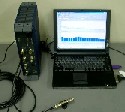Techinfo
Technical Information
Vibration, Shock, and Audible Noise Solutions
Strategies for Vibration, Shock, and Audible Noise Reduction
Vibration, shock, and audible noise issues impact various aspects of day-to-day living environments, including automobiles, industrial machinery, office equipment, home appliances, and more.
In the past, efforts have primarily focused on applying countermeasures reactively.
However, with advancements in precision, performance, and quality driven by computerization and digitalization, more proactive approaches are being adopted.
This technology has recently gained greater importance, so vibration, shock, and audible noise reduction are now integrated from the design stage, leading to the development of quieter and more robust products.
Since the 1990s, Kitagawa Industries has been developing its own high-performance materials and products by performing measurement and analysis using the latest equipment.
We are also proud that our efforts contribute to the design of solutions for our customers.
Vibration, Shock and Audible Noise: Test Facilities to Provide Solutions
| Items | Free fall test (JIS, IEC standards) |
Vibration test (JIS, MIL standards) |
Shock test (JIS, MIL standards) |
Noise measurement (Relative comparison) |
|---|---|---|---|---|
| Photo |
|
|
 |
|
| Test summary |
Drop height: 5 ~ 200cm | Vibration: sine, random | Wave shape: half sine/sawtooth | Baseline noise: 27dB (anechoic chamber) |
| Specimen weight: Up to 2kg | Vibration force: 300kgf max | Pulse width: 1 ~ 100ms | Test level: 30 ~ 130dB | |
| Specimen size: 150 × 200mm | Vibration direction: vertical only | Vibration force: 300kgf | Properties: A, C, flat | |
| Impact surface: steel plate, concrete, etc. | Frequency: 5 ~ 3000Hz | Acceleration: 75G max | Test frequency: 20Hz ~ 20kHz | |
| Temperature: room temperature | Amplitude: 20mm max | Load: 150kg max | ||
| Temperature: -40 ~ 150°C | Temperature: -40 ~ 150°C | |||

